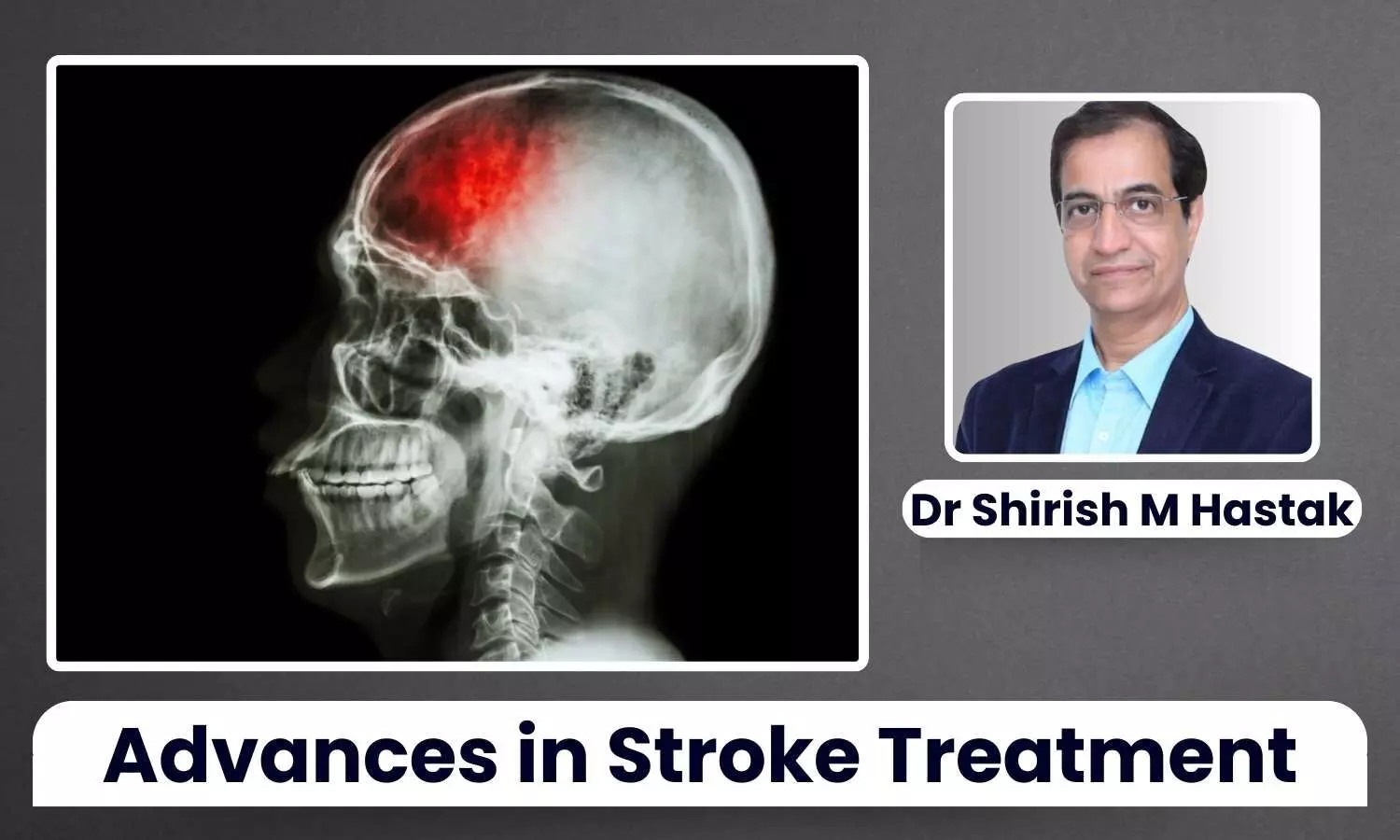Advances in Stroke Treatment and Timely Intervention - Dr Shirish M Hastak

The increasing burden of stroke cases is a growing matter of concern. Stroke remains one of the leading causes of death and disability across India.
However, recent medical advancements such as mechanical thrombectomy and advanced clot-busting drugs are significantly improving recovery outcomes and offering new hope for patients and their families.
This article highlights the latest developments in stroke management aimed at improving quality of life.
What is a Stroke?
A stroke, often referred to as a brain attack, is a medical emergency that requires timely intervention.
It occurs when blood flow to a part of the brain is interrupted or reduced, depriving brain tissue of oxygen and nutrients. Without prompt treatment, brain cells begin to die within minutes.
Types of Stroke
- Ischaemic Stroke: Caused by a blockage or clot in a blood vessel supplying the brain. It accounts for approximately 80% of all strokes.
- Haemorrhagic Stroke: Occurs due to bleeding in or around the brain.
- Transient Ischaemic Attack (TIA): Often called a “mini-stroke,” this is caused by a temporary blockage. Though it resolves on its own, it serves as a warning sign for future strokes.
Causes and Risk Factors
Several factors increase the risk of stroke:
- High blood pressure
- Heart problems
- High cholesterol
- Diabetes
- Smoking
- Family history of stroke
- Poor lifestyle habits, such as lack of physical activity and an unhealthy diet
Recognizing Warning Signs
Remember the acronym BEFAST:
- B – Balance problems
- E – Eye problems
- F – Face drooping
- A – Arm weakness
- S – Speech difficulty
- T – Time to seek emergency help
Timely medical attention within the golden period, the first 4.5 hours after symptoms appear, can significantly improve outcomes.
Complications
Stroke can result in:
- Paralysis
- Speech difficulties
- Memory loss
- Emotional and behavioural changes
Diagnosis
Stroke diagnosis involves:
- CT scan or MRI to confirm type and location
- Blood tests to evaluate blood sugar, cholesterol, clotting ability, and other vital parameters
Treatment Approaches
For Ischaemic Stroke:
- Tissue Plasminogen Activator (tPA): A clot-dissolving drug effective when administered within 4.5 hours.
- Mechanical Thrombectomy: A minimally invasive procedure to physically remove the clot, effective up to 24 hours in selected cases.
For Haemorrhagic Stroke:
- In some cases, surgical intervention is needed to repair ruptured blood vessels.
Advances in Stroke Management
- Advanced Thrombolytics: New clot-busting drugs can be administered beyond the standard window in patients selected with advanced imaging.
- Artificial Intelligence (AI): AI tools now assist in reading brain scans to determine treatment suitability, helping speed up care.
- Robotic-Assisted Rehabilitation: These technologies support motor and cognitive recovery through tailored, repetitive movement therapy and brain stimulation.
Working closely with healthcare professionals and following prescribed rehabilitation plans are key to optimal recovery.
Prevention is Key
Preventive strategies include:
- Controlling blood pressure and blood sugar
- Regular physical activity
- Healthy diet and weight management
- Stress reduction through yoga and meditation
- Adherence to prescribed medications for chronic conditions
By focusing on timely diagnosis, advanced treatments, and preventive care, we can reduce the long-term impact of strokes and help individuals lead healthier lives.


